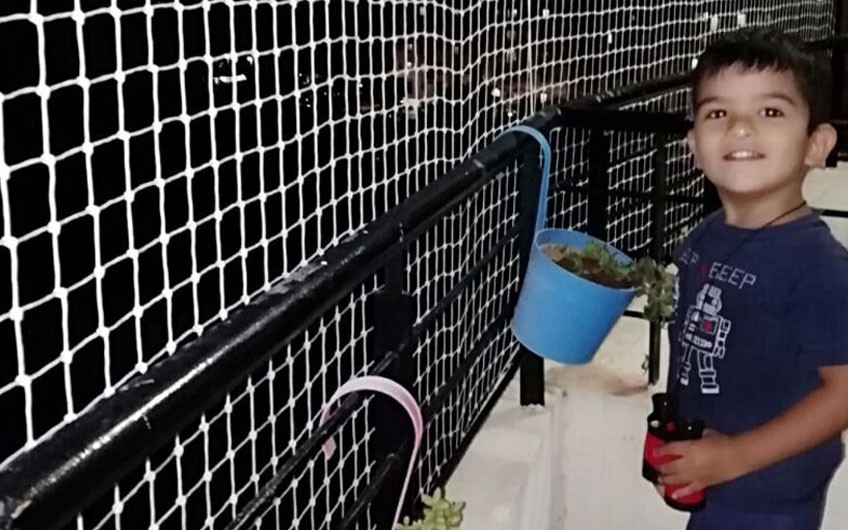
Kids safety nets are protective barriers designed to prevent children from accidents and falls in areas that may pose a safety risk, such as balconies, staircases, windows, or outdoor play areas. These safety nets are particularly important in homes, schools, playgrounds, and daycare centers where children might be exposed to hazardous areas. By providing a protective enclosure, kids safety nets give parents and caregivers peace of mind, knowing that children are less likely to get injured from falling or climbing in dangerous areas.
What Are Kids Safety Nets?
Kids safety nets are specially designed nets made from strong, durable materials like nylon, polyester, or polypropylene. They are typically used to cover or enclose dangerous areas such as balconies, stairways, windows, playgrounds, and beds. These nets prevent children from falling, getting stuck in tight spaces, or accessing hazardous areas.
Kids safety nets are lightweight, flexible, and easy to install, making them an ideal safety solution for many household and public spaces. Depending on the area, they come in different sizes, mesh thicknesses, and designs to ensure maximum safety and protection for children.
Common Uses of Kids Safety Nets
- Balcony and Window Protection: One of the most common uses of kids safety nets is to prevent children from falling off balconies or out of windows. In homes or apartment buildings, open windows or unprotected balconies can be dangerous for young children who may be curious and tempted to climb or lean over the edge. By installing a safety net, you can create a protective barrier that keeps children safe while still allowing airflow and natural light.
- Staircase Safety: Staircases can also pose a significant risk to young children who are just learning to walk or climb stairs. A kids safety net can be placed along stair rails or around stairways to prevent children from falling off the stairs or accessing dangerous areas. These nets help prevent injuries by limiting access to potentially hazardous zones.
- Playgrounds and Outdoor Areas: Kids safety nets are used in playgrounds or outdoor play areas to create a safe environment for children. These nets can be placed around swings, slides, and climbing structures to prevent falls and keep children from wandering into unsafe areas, like traffic zones or other dangerous locations.
- Bunk Beds and Lofts: In homes with bunk beds, safety nets are often installed on the upper levels to prevent children from falling off the edge while sleeping or playing. These nets are especially useful in children’s bedrooms and dormitory-style spaces where safety is a concern.
- Crib and Cot Safety: Kids safety nets are sometimes used around cribs or baby cots to keep babies from rolling out. This type of netting also helps protect babies from getting trapped in the gaps between the bars or getting hurt while trying to stand up or crawl in the crib.
- Pet or Animal Enclosures: Some parents use kids safety nets to create pet enclosures or small playpens for children to play safely in, while keeping animals or pets out of the area. These nets provide a safe space where children can interact with pets without the risk of falls or animal-related injuries.
Features of Kids Safety Nets
- Durable and Strong Materials: Kids safety nets are typically made from strong, weather-resistant, and UV-resistant materials like nylon, polyester, or polypropylene. These materials ensure the nets can withstand outdoor conditions and support the weight of a child without breaking or tearing.
- Small Mesh Size: The mesh size of kids safety nets is typically designed to be small enough that children cannot slip through the holes. This feature is crucial in preventing entrapment or accidental falls. Smaller mesh sizes also discourage children from trying to climb or squeeze through the netting.
- Soft and Flexible: The nets are designed to be soft and flexible to reduce the risk of injury if a child accidentally bumps into them. The net should have some give to it, so that it acts as a cushion or barrier rather than a rigid surface that could cause harm.
- Adjustable and Customizable: Many kids safety nets are adjustable and customizable in terms of size. They can be tailored to fit specific areas, whether it’s a balcony, window, or stairway. The nets are available in various dimensions to accommodate different spaces and requirements.
- Easy to Install and Maintain: Kids safety nets are typically easy to install, often requiring simple fasteners, hooks, or ropes to secure them in place. They can be quickly removed or adjusted as necessary. Maintenance is minimal and generally consists of regular checks to ensure the net is intact and free from damage.
- Weatherproof: Kids safety nets designed for outdoor use are often treated to be weatherproof. They are resistant to UV rays, rain, and wind, ensuring long-lasting protection even in varying weather conditions.
- Attractive Design: Safety nets for children are available in various colors and designs, making them visually appealing for use in family homes or play areas. The nets can blend in with the décor while still providing critical safety features.
Benefits of Kids Safety Nets
- Fall Prevention: The primary benefit of kids safety nets is the prevention of falls. Whether it’s from a high balcony, staircase, or bunk bed, the net acts as a protective barrier that prevents children from falling or climbing into dangerous areas.
- Peace of Mind for Parents: Kids safety nets help parents feel more at ease knowing that their children are less likely to get hurt. These nets give caregivers the confidence that children are safe in environments that may have previously been considered risky.
- Enhanced Safety in Play Areas: Safety nets create a secure environment where children can play freely without the constant worry of falling or getting injured. This is especially important in playgrounds or other outdoor spaces where there are swings, slides, or other equipment.
- Protection from Traps and Gaps: Safety nets prevent children from becoming trapped in small spaces, such as between furniture, railings, or gaps in structures. This can reduce the risk of strangulation or entrapment, which can sometimes occur with traditional barriers.
- Helps Comply with Safety Regulations: In some cases, particularly in daycare centers or public spaces, kids safety nets are necessary to comply with safety standards and regulations. By using these nets, facilities can provide a safer environment for children, protecting them from falls and accidents.
- Cost-Effective: Installing kids safety nets is often a more affordable solution compared to more elaborate safety systems or physical barriers. They are a cost-effective way to ensure children’s safety in both public and private spaces.
Installation Tips for Kids Safety Nets
- Measure the Area: Before purchasing a safety net, measure the area where it will be installed (e.g., the length of the balcony, height of the stairs, or the size of the bunk bed). This will ensure you buy the correct size of net.
- Secure Fastenings: Make sure the safety net is securely fastened to the designated areas using strong hooks, ropes, or brackets. The net should be tight enough to prevent any sagging but not too tight as to create strain on the net material.
- Check for Gaps: Ensure that the net covers the entire area without leaving gaps where a child could potentially squeeze through. Regularly inspect the net for any damage or areas that may need reinforcement.
- Regular Maintenance: Periodically inspect the net for any signs of wear, fraying, or damage. Check the fastenings to make sure they are still secure. If you notice any issues, replace or repair the net immediately to maintain maximum safety.
